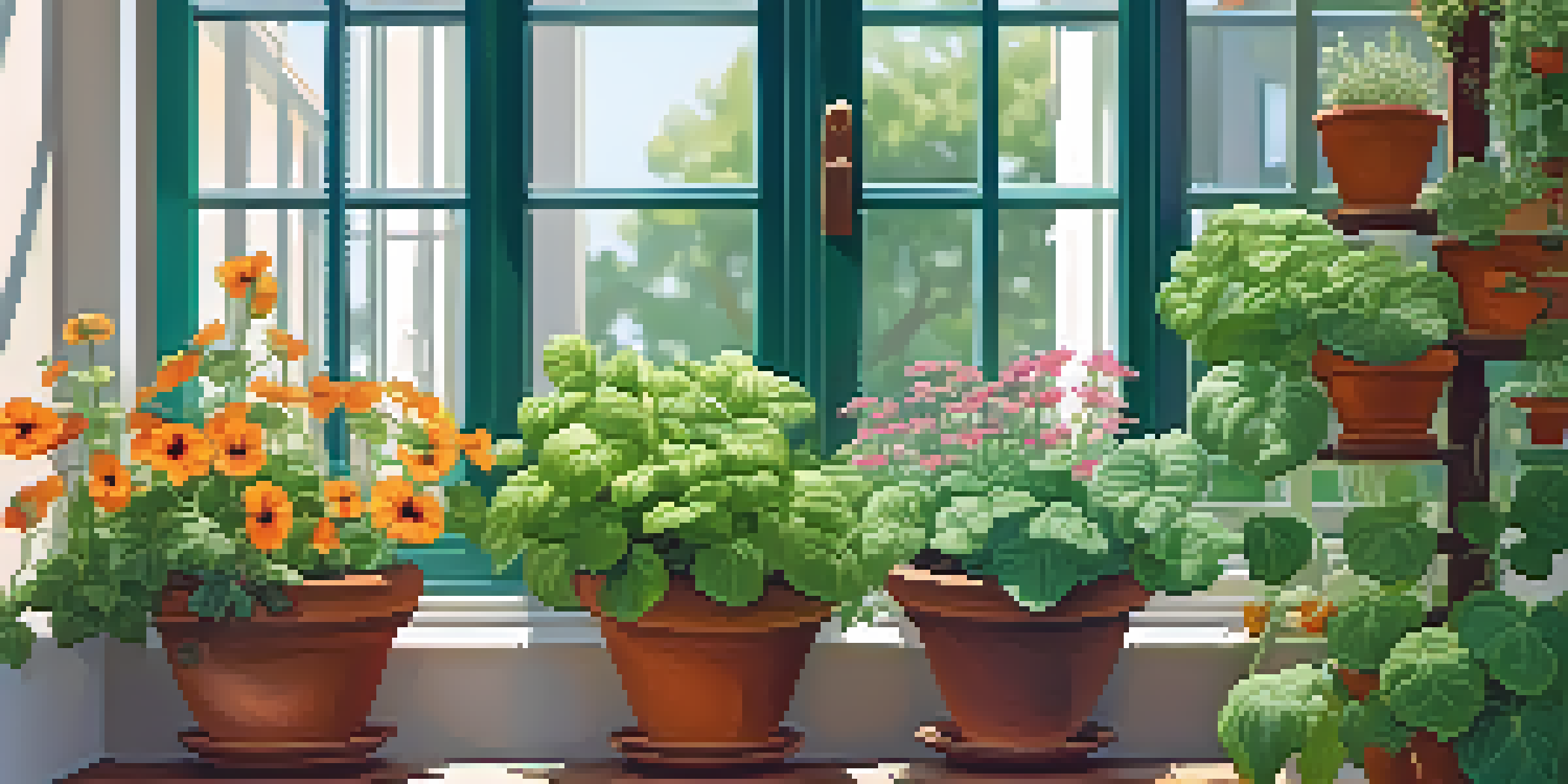Maximizing Space: Vertical Gardening for Small Areas

Understanding Vertical Gardening and Its Benefits
Vertical gardening is the practice of growing plants upwards instead of outwards, making it ideal for small spaces. This technique allows you to utilize walls, fences, and other vertical structures to create a lush environment, even in compact areas. Not only does it conserve space, but it also enhances visual interest and can improve air quality in urban settings.
Choosing the Right Plants for Vertical Gardens
Selecting the appropriate plants is crucial for a successful vertical garden. Herbs, such as basil and mint, are fantastic options because they don't require deep soil and can thrive in smaller containers. Additionally, flowering plants like nasturtiums can provide vibrant colors while attracting pollinators, creating a lively atmosphere.
Maximize Space with Vertical Gardening
Vertical gardening allows you to grow plants upwards, making it perfect for small areas while enhancing aesthetics and air quality.
Essential Structures for Vertical Gardening
To start your vertical garden, you'll need supportive structures. Options range from simple shelves to more complex trellises and wall-mounted planters. These structures not only hold your plants but also create a visually appealing arrangement that can transform a dull wall into a vibrant green space.
Soil and Watering Techniques for Vertical Gardens
Choosing the right soil is essential for the health of your vertical garden. A lightweight, well-draining potting mix is ideal, as it allows roots to breathe and prevents waterlogging. Watering techniques can also differ; drip irrigation systems or self-watering planters can ensure your plants receive the right amount of moisture without taking up too much space.
Choose the Right Plants Wisely
Selecting suitable plants like herbs and flowering varieties is key to a thriving vertical garden that adds color and utility.
Lighting Considerations for Vertical Gardens
Light is a key factor in the success of your vertical garden. Most plants require at least six hours of direct sunlight each day, so positioning your garden accordingly is vital. If natural light is limited, consider using grow lights to supplement, ensuring your plants receive the energy they need to thrive.
Maintaining Your Vertical Garden
Regular maintenance is necessary to keep your vertical garden flourishing. This includes watering, pruning, and checking for pests. By staying vigilant and caring for your plants, you'll not only extend their life but also enjoy a beautiful, thriving garden throughout the seasons.
Essential Structures for Support
Utilizing supportive structures such as shelves or trellises can transform any vertical space into a vibrant green oasis.
Creative Vertical Gardening Ideas to Inspire You
Getting creative with your vertical garden can make it even more enjoyable. Consider using repurposed items like old pallets or wooden crates as planting bases. You can also create themed gardens, like an herb wall for your kitchen or a flower tower for your balcony, to infuse your personal style into your green space.
Conclusion: Embracing Vertical Gardening for Small Spaces
In conclusion, vertical gardening is an inventive solution for maximizing small areas. By understanding the basics and exploring creative options, you can transform any small space into a lush retreat. Whether you're a seasoned gardener or just starting, this approach allows you to bring nature closer to home.